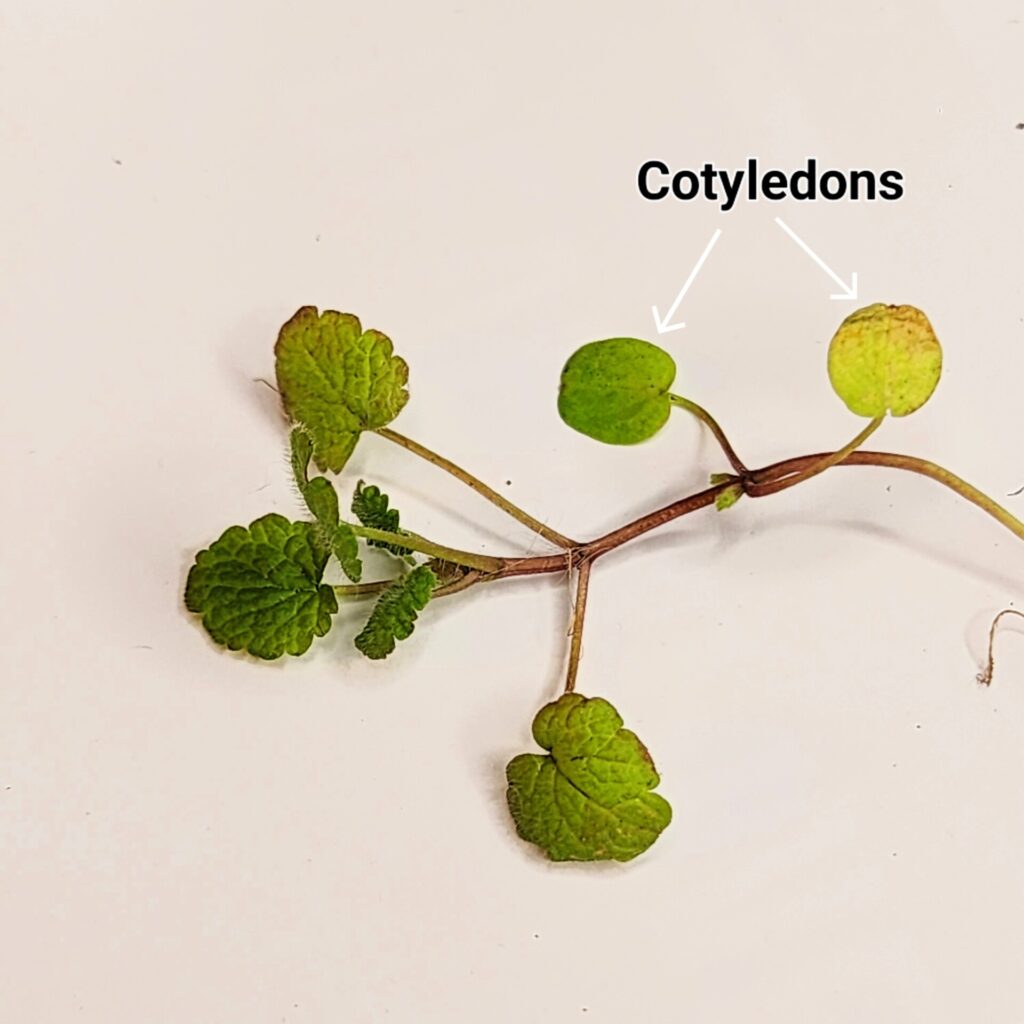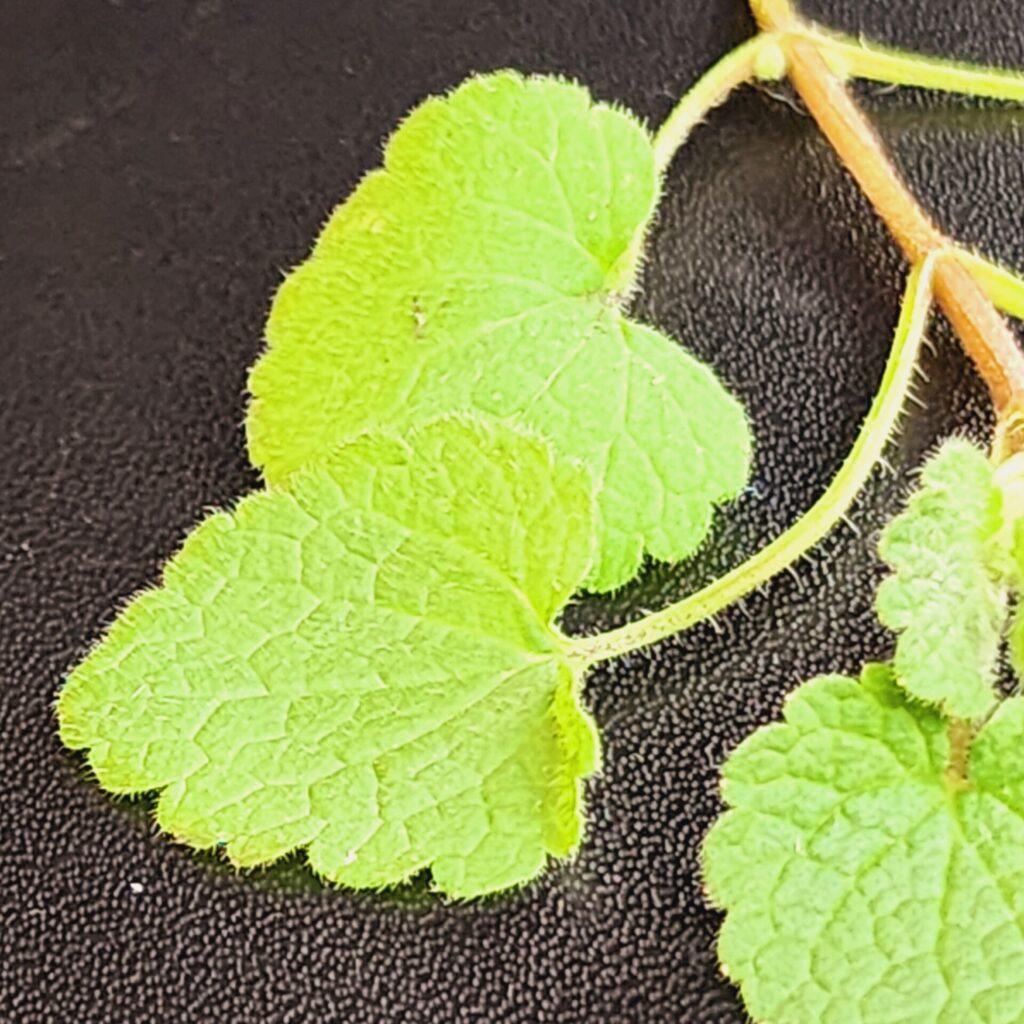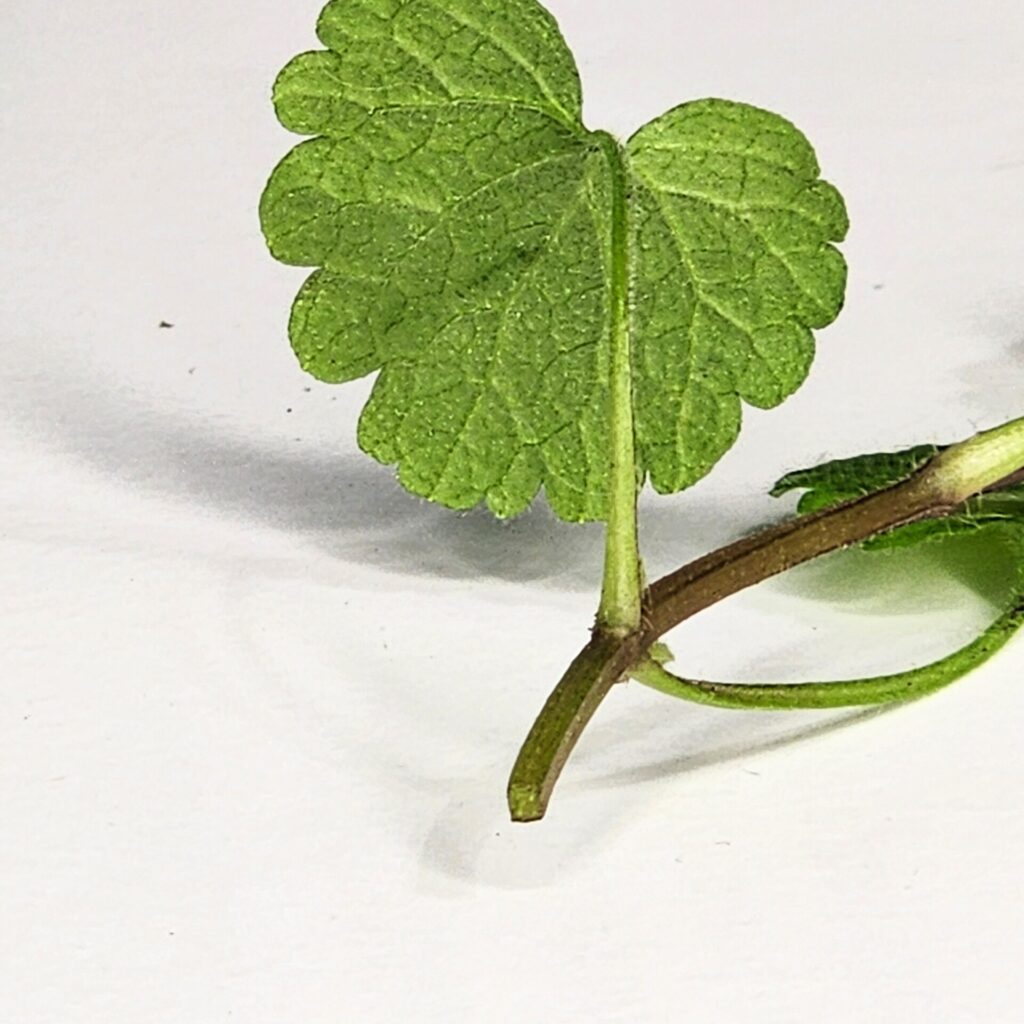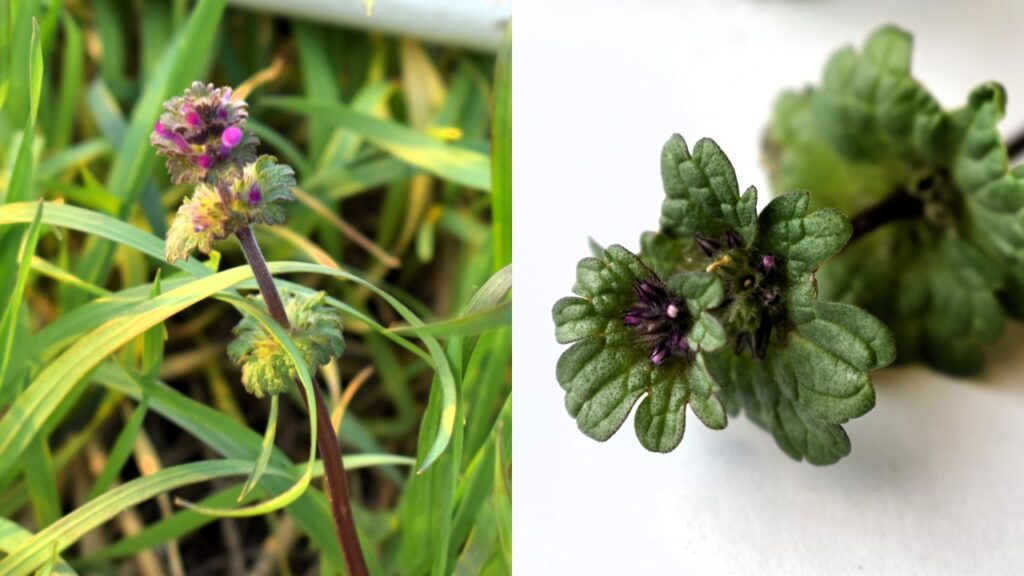Common names: Henbit, henbit dead nettle, henbit nettle, blind nettle, bee nettle, and giraffe head.
Latin name: Lamium amplexicaule.
- “Lamium” is derived from the Latin for “throat,” referencing the flower tube’s elongated shape.
- “amplexicaule”, also derived from the Latin, means “embracing the stem,” describing the upper leaves of henbit that encircle the stem.
Family: Lamiaceae – “the mint family”.
Life cycle: In Indiana, henbit is a winter annual. Plants emerge as small seedlings in the fall and overwinter (Figure 1). In late winter and early spring, plants mature and flower, producing seeds by late spring. After setting seeds, the plant dies.
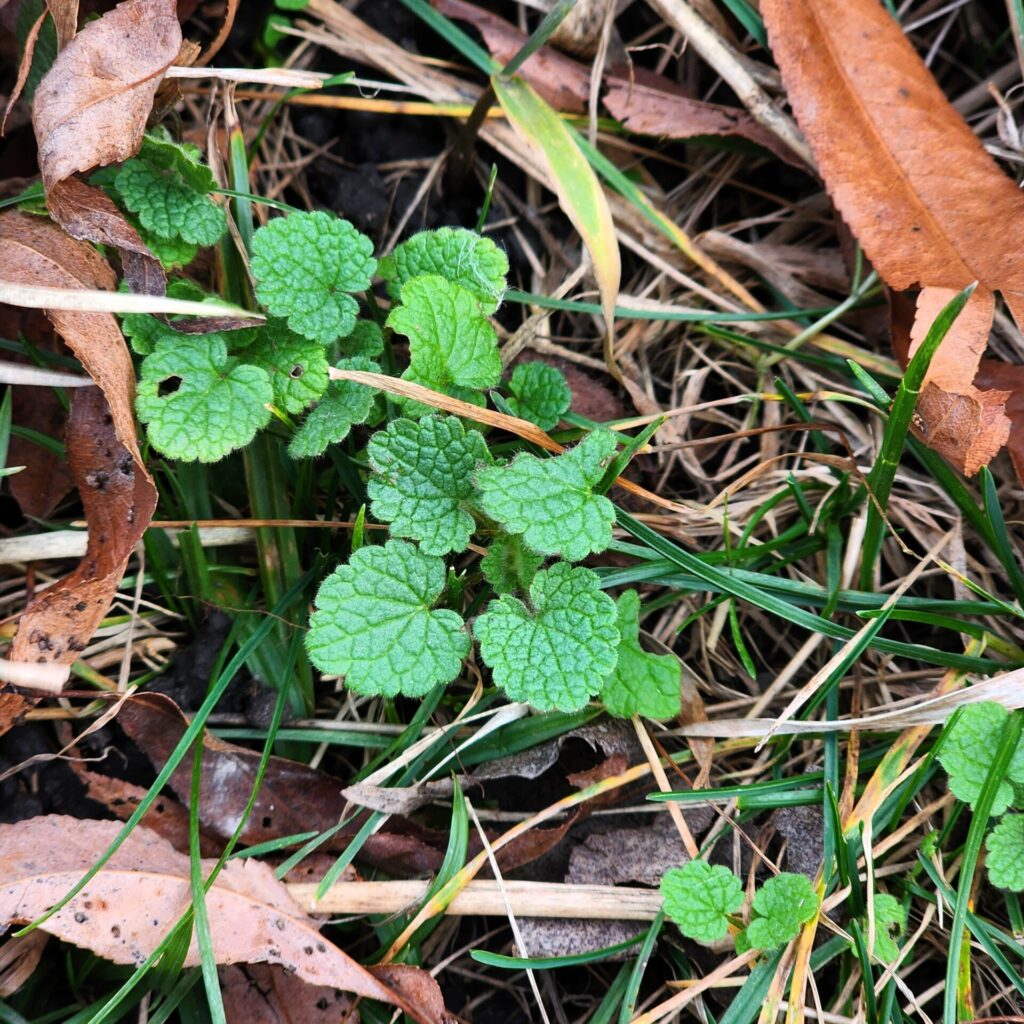
Figure 1. A henbit seedling growing in February 2024 in West Lafayette, IN (Photo by Jeanine Arana).
Identification
- Seedling: Henbits have two seed leaves (“cotyledons”) that are round with hairy petioles. The base of the cotyledon exhibits two lobes, notched where it connects to the petiole, while the tip may be flat or shallowly indented (Figure 2). Young leaves have hairy petioles (Figure 3). Stems are characterized by a square shape (Figure 4) and hairs pointing downward.
- Mature plants are branched throughout the length of the primary stem (Figure 5), forming a mat up to 1 foot wide. Upper leaves lack petioles; instead, the base of the leaf directly attaches to and encircles the stem (Figure 6). Henbit flowers are elongated, tube-like, and pink-to-purple (Figure 7).
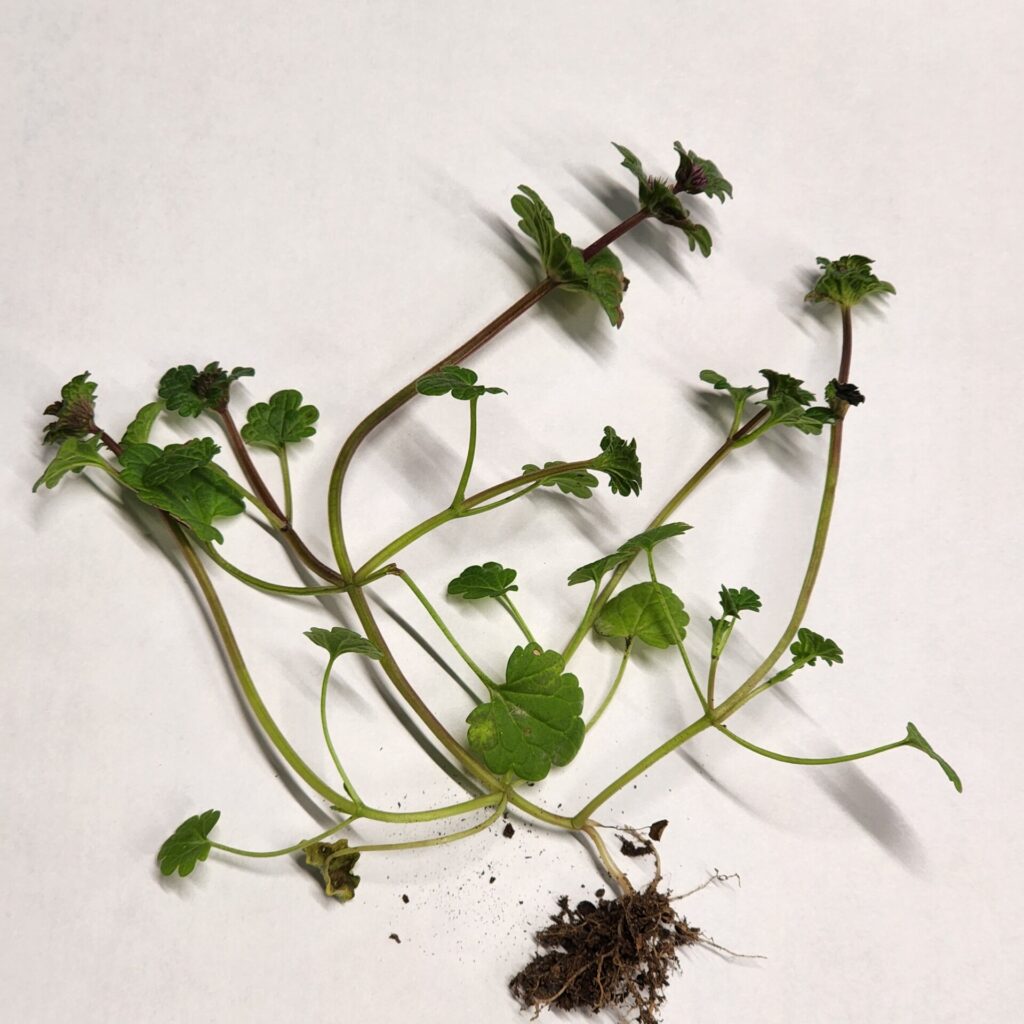
Figure 5. Henbit has many branches throughout the length of the primary stem (Photo by Jeanine Arana).
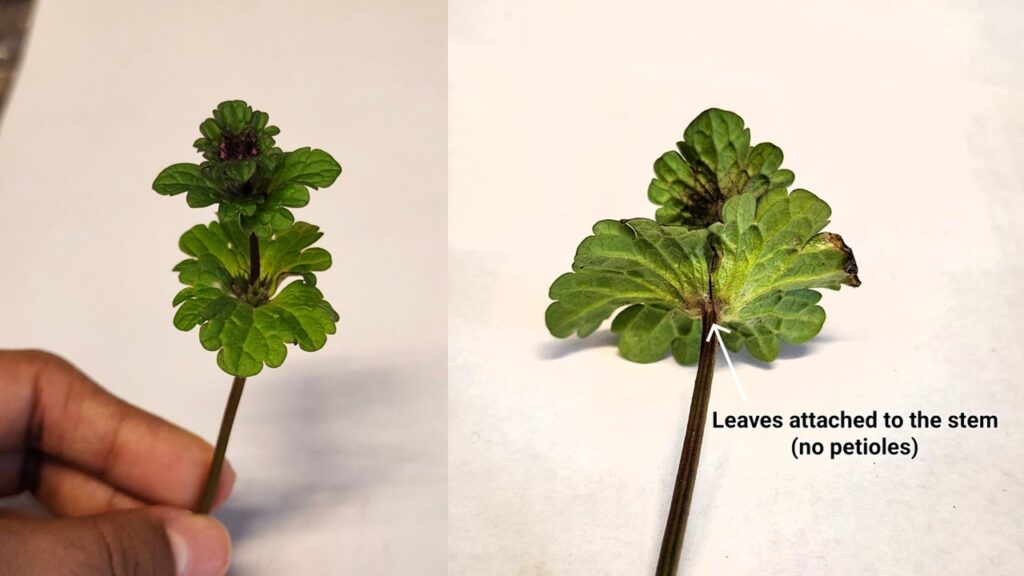
Figure 6. The upper leaves of mature henbit plants are directly attached to the stem without a petiole. Views from above (left) and below (right) (Photos by Jeanine Arana).
Reproduction
Six to 10 pink-to-purple flowers per leaf pair appear in the spring. Flowers can self-pollinate and may produce seeds without opening. Each flower produces four seeds, and each plant can produce from 200 to 2,000 seeds. Seeds can remain viable for more than 25 years.
Integrated weed management strategy
Cultural and mechanical practices:
- Scouting: Conduct monitoring in the fall after tilling (if applicable) or spring to identify henbit patches and plan control strategies accordingly.
- Cover crops: Utilize cover crops to outcompete henbit for resources and provide a physical barrier to its growth. Integrating fall-planted cover crops can disrupt henbit’s life cycle.
- Plastic mulch: Acting as a physical barrier, plastic mulch hinders germinating henbit seedlings from reaching the soil surface. Ensure that planting holes are sized to fit only your transplant. Excessively large planting holes can allow weeds to emerge next to the crop.
- Silage tarps: Silage tarps prevent germinating weeds from receiving sunlight. Tarps placed in the fall and removed in the spring will provide effective control of henbit. Alternatively, tarps can be placed in the spring prior to henbit seed set and allowed to remain in place for three weeks.
- Hand-weeding, hoeing, and cultivation: Eliminate seedlings before seed production to prevent an increase in the weed seed bank.
- Flame weeding: Use flame weeding to control henbit in its early stages of growth.
Chemical control
- Pre-emergence (PRE) herbicides: Because henbit emerges in the fall, the use of PRE herbicides in annual vegetable crops may not be advisable, especially if fall/winter cover crops will be planted.
- Post-emergence (POST) herbicides: Apply POST herbicides to henbit in the spring before planting/transplanting. Depending on your production system, this can be done instead of, or in addition to, spring tillage.
- Visit the Midwest Vegetable Production Guide to learn which herbicides are labeled for the crops you intend to grow.
For some, no management is also an option. Henbits provide living roots during the fall, winter, and early spring when many vegetables are not in the field. They will naturally senesce before many summer vegetable crops are planted. They also provide an early source of pollen for pollinators.
Continue learning: To find more henbit pictures for identification, visit the Weed Science Society of America (WSSA) Weed Identification tab.
References
DeFelice, M. 2005. Henbit and the Deadnettles, Lamium spp. – Archangels or Demons? Weed Technology.
